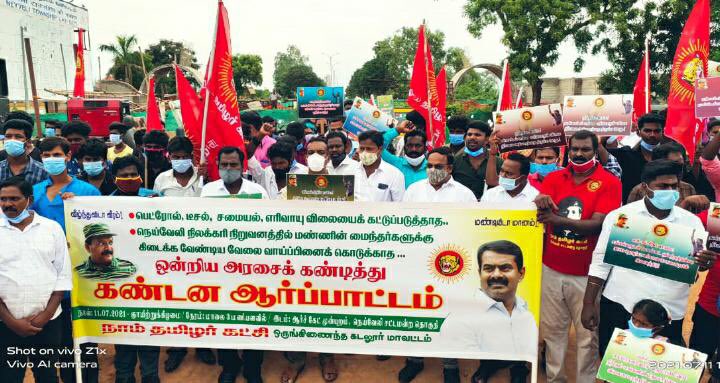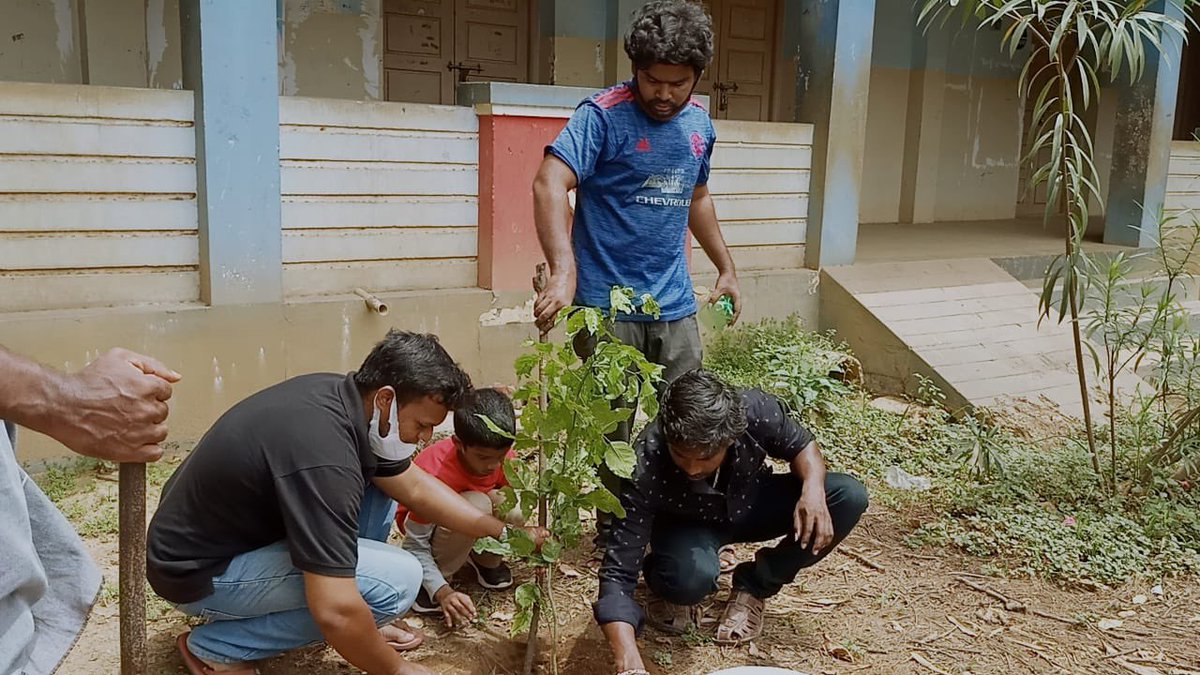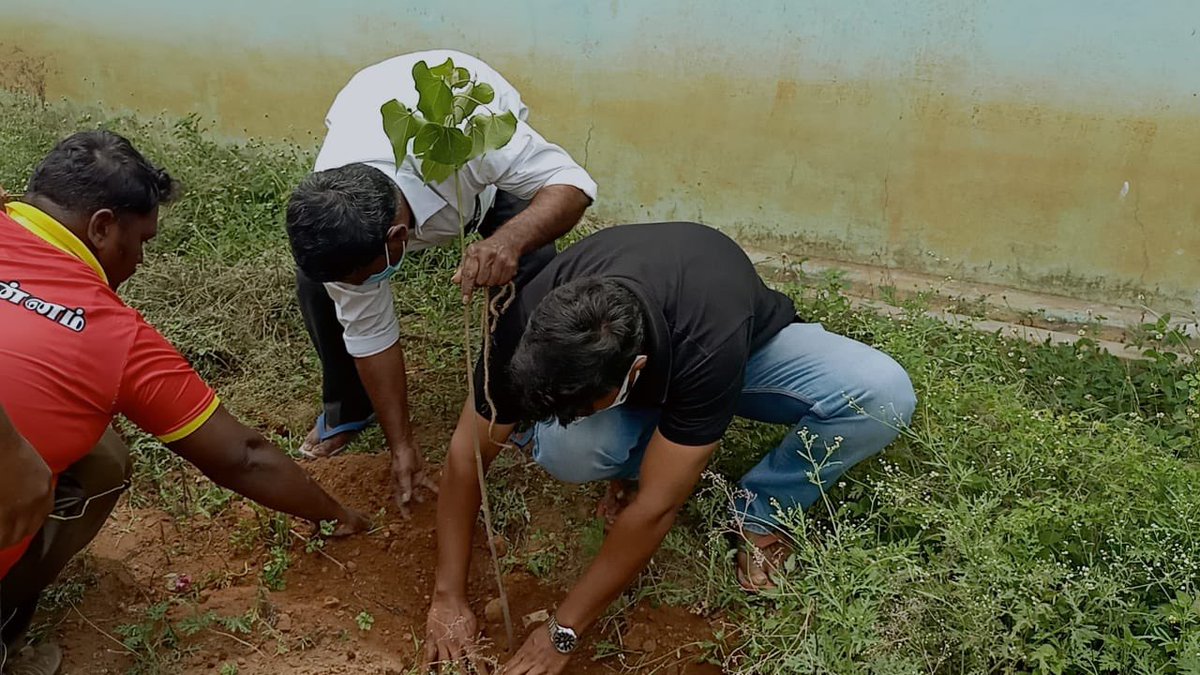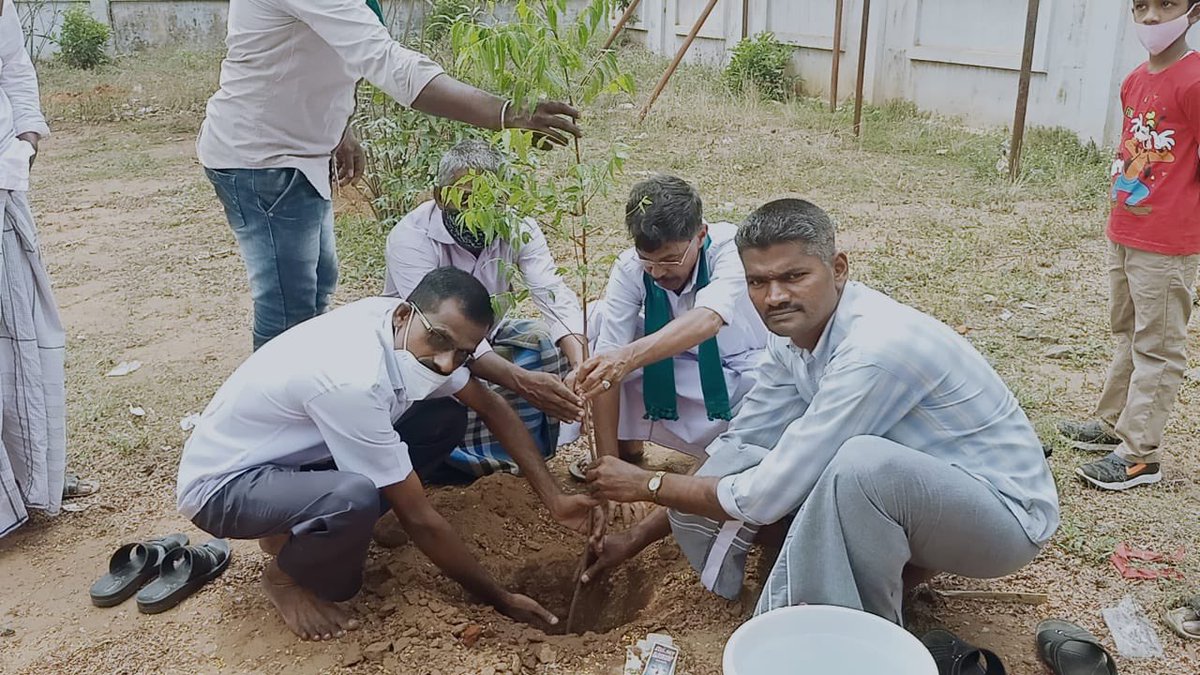
The Origin Of Sinhalese
By: Dr. S. K. Vadivel
After vanquishing King Elara, Gemunu had to fight thirty-two minor Tamil kings (Kshatriyas) in Ruhunu before ruling as a single sovereign over Lanka (101- 77 B.C.).So genuine was Gemunu’s admiration of King Elara’s valour - 1/82
By: Dr. S. K. Vadivel
After vanquishing King Elara, Gemunu had to fight thirty-two minor Tamil kings (Kshatriyas) in Ruhunu before ruling as a single sovereign over Lanka (101- 77 B.C.).So genuine was Gemunu’s admiration of King Elara’s valour - 1/82
and bravery that he erected a monument in the latter’s honour at the very spot he fell. King Gemunu decreed that the tomb shall be always honoured, i.e. all persons passing by the tomb are to silence their music, get down from their vehicles/horses and walk in silence - 2/82
until they pass the tomb.
In direct contrast, the Sinhala-dominated government in 1948, during the period Dr. S. Paranavithame was commissioner of archaeology, maliciously built the government medical officers’ quarters over the tomb of a king who once ruled over Lanka - 3/82
In direct contrast, the Sinhala-dominated government in 1948, during the period Dr. S. Paranavithame was commissioner of archaeology, maliciously built the government medical officers’ quarters over the tomb of a king who once ruled over Lanka - 3/82
justly and wisely, over friend and foe alike, without fear or favour for a period of 44 years (145-101 B.C.).
King Duttu Gemeunu died in 77 B.C. The Ruwanwali Seya, the Brazen Palace and the Mirisaveti stupa stand in his memory. His brother Saddha Tissa (77-59 B.C.) - 4/82
King Duttu Gemeunu died in 77 B.C. The Ruwanwali Seya, the Brazen Palace and the Mirisaveti stupa stand in his memory. His brother Saddha Tissa (77-59 B.C.) - 4/82
succeeded him. In Saddha Tissa’s memory stands the vihara at Digavapi.
Between the reign of Duttu Gemunu and the next important sovereign Valgambha are Thulatha Nagan, (59 BC for forty days), succeeded by his brother Lanja Tissa (59-50 B.C.). His brother Khallata Nagan - 5/82
Between the reign of Duttu Gemunu and the next important sovereign Valgambha are Thulatha Nagan, (59 BC for forty days), succeeded by his brother Lanja Tissa (59-50 B.C.). His brother Khallata Nagan - 5/82
(50-44 B.C.) succeeded Lanja Tissa. Khallata Nagan was succeeded by his younger brother Vatta Gamini alias Valgambha, who within six months of rule was chased out by a Brahmin named Tissa, who revolted against him.
Seven Tamils who came with their armies from south - 6/82
Seven Tamils who came with their armies from south - 6/82
India supported the Brahmin. Undaunted, Valganlbha collected an army and chased away the seven brothers and regained his kingdom and ruled from (29-11 B.C.). Valgambha demolished the monastery at Giri and in its place built the much-venerated Abhayagiri vihara, in - 7/82
Ailuradhapura. Valgambha was succeeded by his nephew Mahasuli Maha Tissa (11-3 B.C. who was followed by Valgambha’s son Cora Nagan. Cora Nagan’s wife Anula poisoned him; she also poisoned her second husband Kutta Kanna, son of Mahasuli Maha Tissa.
It may be of interest - 8/82
It may be of interest - 8/82
and value to note that all kings from Muthu Siva (307-247 B.C.) right down to the beginning of the Christian era (a period of 300 years), were Tamils and barring King Muthu Siva, others were Buddhist by faith. The much adored and admired King Duttu Gemunu was a Tamil - 9/82
both from his father’s side Kavan Tissa, and his mother’s side Vihara Devi, daughter of the Naga King of Kelaniya and a direct descendent of King Uttiya. They were of course, Buddhist by faith. There is ample evidence that the districts of Hambantota, Galle, Amparai and - 10/82
Ratnapura were the home of Tamils of the Hindu faith who embraced the Buddhism during the 3rd –2nd centuries B.C. and adopted Sinhala as their mother tongue. The shrine dedicated to Lord Murukan at Kathirkamam and Lord Vishnu at Devinuwara is evidence of this. A shrine - 11/82
dedicated to Lord Chandreswara at Hambantota is no more due to the lack of patronage and subsequent neglect. Dr. Edward Muller, onetime commissioner of archaeology, in his “Records of Ceylon,” published in 1883 states, “There are Tamil Brahmi and Asokan Brahmi - 12/82
inscriptions on stones belonging to the 3rd century B.C. The earliest inscriptions in Sinhala are only of the 8th A.D.
Tamil inscriptions of the 2nd century B.C at Thalangoda Vihara, Matale will testify to the fact that Tamil-speaking Buddhist monks lived in caves in - 13/82
Tamil inscriptions of the 2nd century B.C at Thalangoda Vihara, Matale will testify to the fact that Tamil-speaking Buddhist monks lived in caves in - 13/82
the neighbourhood of the vihara. Buddhists, who lived in the neighbourhood of the Diga Vapi vihara, built by King Saddha Tissa in the 2nd century B.C and Buddhists who lived in the neighbourhood of the Naga Vihara at Naga Deepa (Jaffna) were Tamils. Thousands of Tamils - 14/82
of the Buddhist faith who lived in south India during that era, i.e. 8th century A.D. later returned to the Hindu faith.
The Bovatagala inscriptions (30 miles off Kathirkamam) carry the engraved fish symbol of the Pandians. King Duttu Gemunu had to fight 32 Pandian - 15/82
The Bovatagala inscriptions (30 miles off Kathirkamam) carry the engraved fish symbol of the Pandians. King Duttu Gemunu had to fight 32 Pandian - 15/82
chieftains at Ruhuna to become the sole ruler of Lanka. King Valgambha had to fight seven petty Pandian chieftains to reassume sovereignty at Anuradhapura.
According to Hugh Neville the oli of the Southern Province seen in the villages of Bope, Tiranagama, Madawatte and - 16/82
According to Hugh Neville the oli of the Southern Province seen in the villages of Bope, Tiranagama, Madawatte and - 16/82
Bandattara are descendants of the Tamils of south India. They function as astrologers and ritual priests, conducting exorcism – tovil, bali and gara yakka (Matara suniam).
Dr. R. L. Brohier in ‘Discovering Ceylon,’ says, “a tank in Hambantota now called Magama wewa - 17/82
Dr. R. L. Brohier in ‘Discovering Ceylon,’ says, “a tank in Hambantota now called Magama wewa - 17/82
, was in ancient days known as “Pandikulam” – Ooru situ wewa, while even Dr. S. Paranavithana confirms that Ruhuna was the homeland of the Tamils in the pre-Christian era. The Murukan kovil at Kathirkamam and Vishnu kovil at Devinuwara confirm that fact.
Ratnapura, the - 18/82
Ratnapura, the - 18/82
Gem city: gem in Sinhala is menik; in Tamil it is ratna. The fact that the city is called Ratnapura and not Menik pura is evidence that the inhabitants of Sabaragamuwa in the ancient days were Tamils.
Nuwar Eliya: Nuwara is the corrupted form of the Tamil world Nagara - 19/82
Nuwar Eliya: Nuwara is the corrupted form of the Tamil world Nagara - 19/82
Eliya is the corrupted form of the Tamil word ‘veliye’ (outside) i.e. outside the city.
Nallathanni in Tamil is, ‘good (fresh) water.’ A village on the road to Adam’s Peak is called ‘Nalla thanni.’ This is evidence that the earliest pilgrims to Adam’s Peak were Tamil - 20/82
Nallathanni in Tamil is, ‘good (fresh) water.’ A village on the road to Adam’s Peak is called ‘Nalla thanni.’ This is evidence that the earliest pilgrims to Adam’s Peak were Tamil - 20/82
speaking Hindus.
At Devol Devale, Seenigama, among other rituals devotees also walk on embers or red-hot cinders. The Buddha denounced self-immolation. This is evidence that the present Buddhists inherited these practices from their Hindu ancestors who embraced Buddhim in- 21/82
At Devol Devale, Seenigama, among other rituals devotees also walk on embers or red-hot cinders. The Buddha denounced self-immolation. This is evidence that the present Buddhists inherited these practices from their Hindu ancestors who embraced Buddhim in- 21/82
in 246 B.C.
The Hindu element is patent in the lifestyle of every Sinhala-Buddhist. The 14th day in the month of April is not Hindu New Year’s day as erroneously believed. It is the New Year’s day of the Tamils. Buddhists in Sri Lanka observe that day as their New - 22/82
The Hindu element is patent in the lifestyle of every Sinhala-Buddhist. The 14th day in the month of April is not Hindu New Year’s day as erroneously believed. It is the New Year’s day of the Tamils. Buddhists in Sri Lanka observe that day as their New - 22/82
Year too. Buddhists get their heads anointed, tie the ‘pirith noola,’ indulge in ‘ganu-denu,’ perform rituals, recite prayers, light incense to the Gods every morning before commencing business for the day, lay foundations at auspicious times etc. etc. It may therefore - 23/82
not be incorrect to assume that Sri Lankan Buddhists, who profess to follow Theravada Buddhism, are descendants of the Tamils (Hindus). No king of Lanka during its 2000 years history claimed that he was from an Aryan dynasty.
There are no walawuas and pattus in north - 24/82
There are no walawuas and pattus in north - 24/82
India. The walawuas and pattus of south India became the walauwas and pattus of Lanka. There are no Nayakes in north India. Senanayake, Bandaranaike, Alahakone, Kulathunge, Wickrema, Anuradha, Gunasinghe, Gunaratna etc are obviously Tamil names. Caste divisions are - 25/82
“Un roll” @threadreaderapp
• • •
Missing some Tweet in this thread? You can try to
force a refresh



















